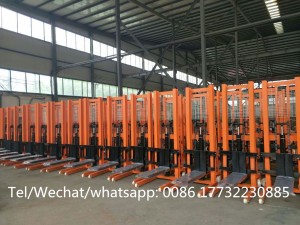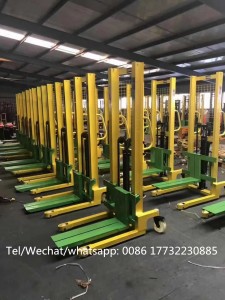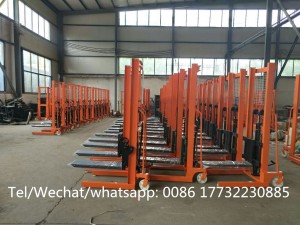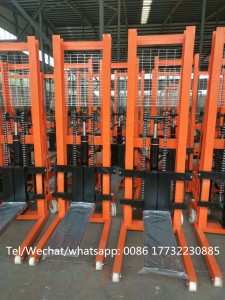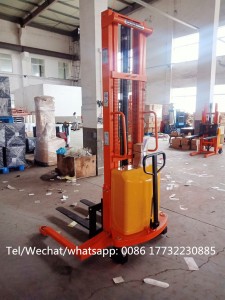When operating stacker forklifts, operators should be aware of various hazards that can pose risks to their safety as well as the safety of others in the vicinity. Some common hazards associated with stacker forklifts include:
Tip-over: Stackers can tip over if they are not operated within their stability limits. Factors that can contribute to tip-overs include overloading, improper load placement, excessive speed during turns, and uneven or unstable surfaces. Operators should be cautious and adhere to load capacity guidelines and safe operating practices to prevent tip-overs.
Falls: Operators can fall from the platform or off the equipment if they are not properly positioned or secured. It is important to use the designated operator position and ensure that all safety features, such as handrails or harnesses, are utilized when provided.
Collisions: Collisions with other equipment, racks, walls, or pedestrians are potential hazards. Operators should maintain a clear view of their surroundings, use mirrors if available, and be cautious when maneuvering to avoid collisions. Using horns or other warning signals can also help alert others to the presence of the stacker forklift.
Falling Objects: Improperly stacked or unstable loads can fall from the forks, causing injuries to operators or nearby workers. Operators should ensure that loads are properly secured and balanced on the forks and avoid sudden movements that can dislodge the load.
Pinch Points and Crush Hazards: Operators should be cautious of pinch points and crush hazards that can occur when loading or unloading pallets or when stacking and unstacking loads. Hands, feet, and body parts should be kept clear of moving parts, particularly during the lifting and lowering of the forks.
Uneven Surfaces: Operating stacker forklifts on uneven surfaces can affect stability and increase the risk of tip-overs. Operators should be cautious when traversing ramps, floor transitions, or uneven terrain and adjust their speed accordingly.
Lack of Visibility: Limited visibility can create hazards, especially when operating in congested areas or with obstructed views. Operators should be aware of blind spots and use caution when moving in tight spaces. If available, operators should use mirrors or other aids to improve visibility.
Improper Maintenance: Poorly maintained stacker forklifts can lead to mechanical failures or malfunctions that can result in accidents. Regular maintenance, including inspections and repairs, should be conducted according to the manufacturer’s guidelines to ensure the equipment is in safe working condition.
Operators should be vigilant and aware of these hazards and take appropriate measures to mitigate risks. Following proper safety procedures, receiving adequate training, and adhering to manufacturer guidelines and workplace policies are essential in minimizing the potential hazards associated with stacker forklift operations.
Post time: Sep-21-2023





